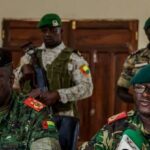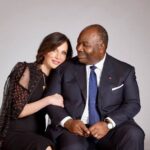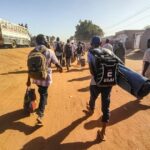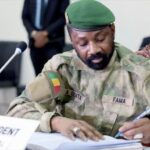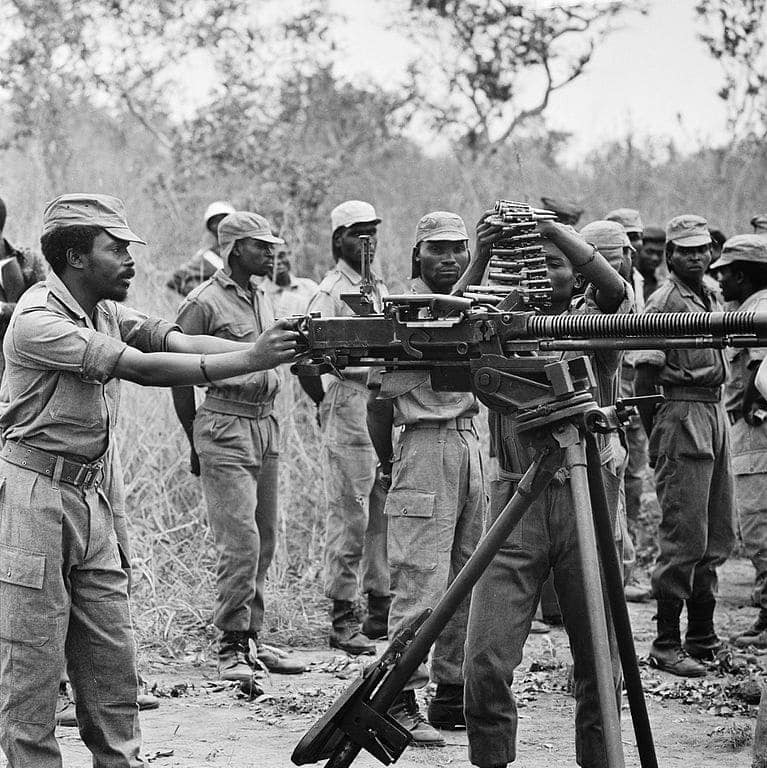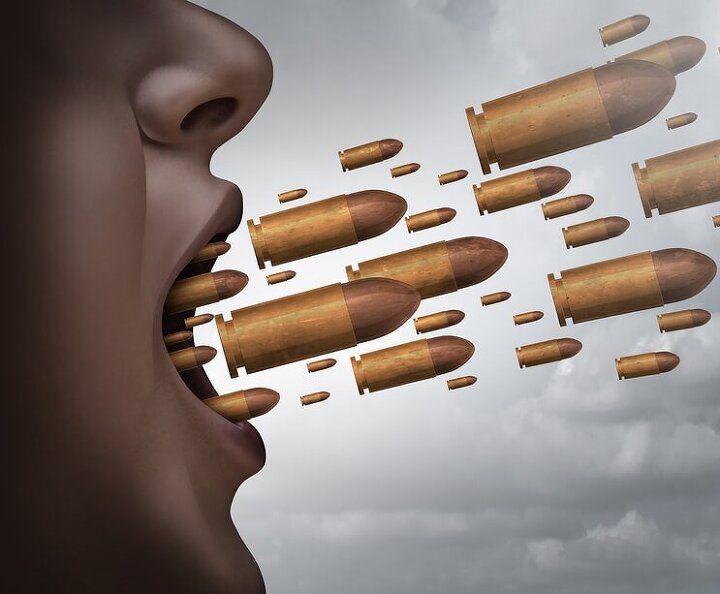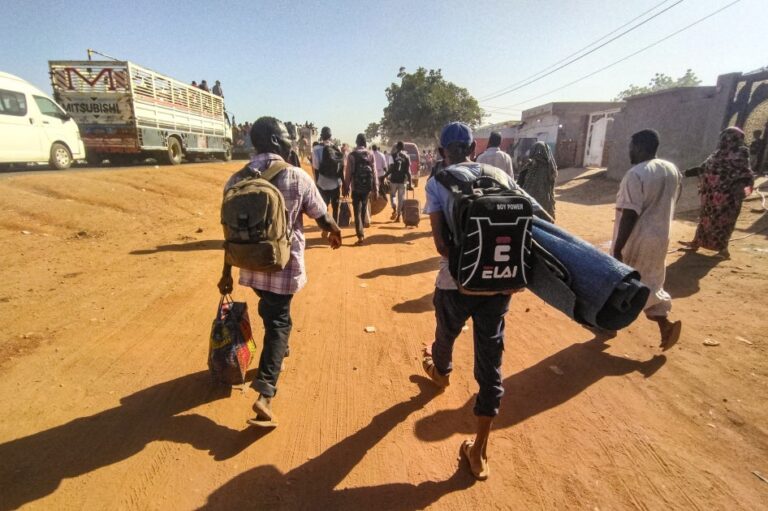The ![]() Angolan Civil War begun in 1975 just after
Angolan Civil War begun in 1975 just after ![]() Angola took Political Sovereignty from the
Angola took Political Sovereignty from the ![]() Portuguese Anatomy, in November that same year. The
Portuguese Anatomy, in November that same year. The ![]() Portuguese were exhausted with their dominion over the foreign land, they were in and decided to leave in November 1975. Now, post this, there was a heated power struggle between three Anatomies in
Portuguese were exhausted with their dominion over the foreign land, they were in and decided to leave in November 1975. Now, post this, there was a heated power struggle between three Anatomies in ![]() Angola who were opposed to the Colonial administration of Portugal, when they were in power. These Anatomies were by name, The People’s Movement for the Liberation of Angola(MPLA), The National Union for the Total Independence of Angola (UNITA) and National Front for The Liberation of Angola (FNLA).
Angola who were opposed to the Colonial administration of Portugal, when they were in power. These Anatomies were by name, The People’s Movement for the Liberation of Angola(MPLA), The National Union for the Total Independence of Angola (UNITA) and National Front for The Liberation of Angola (FNLA).
The three Anatomies which became Major Political Parties in ![]() Angola were all in conflicts regarding the adminstration of their Nation. They fought amongst themselves and this led to huge atrocities in the country. The FNLA s had support from DR CONGO
Angola were all in conflicts regarding the adminstration of their Nation. They fought amongst themselves and this led to huge atrocities in the country. The FNLA s had support from DR CONGO![]() initially called Zaire and The MPLA had support from The Soviet Union and Cuba, whilst UNITA had massive supporr from people in
initially called Zaire and The MPLA had support from The Soviet Union and Cuba, whilst UNITA had massive supporr from people in ![]() Angola, but no main support internationally. The
Angola, but no main support internationally. The ![]() Portuguese left Angola suddenly and did not hand power to any Political Anatomy in Angola. The MPLA Anatomy who were mostly situated around Luanda announced to the nation as the holders of The new Administrative unit of the Political Anatomy in Angola. They were celebrated and congratulated by countries in Africa but this did not go down well with UNITA and FNLA and they set up an oppositionary administration in their quest to evacuate the MPLA fully from power. South African Soldiers also came to assist UNITA and FNLA whilst Cuban soldiers ranging to about 50,000 came in massively to defend the MPLA and drove all South Africans out of
Portuguese left Angola suddenly and did not hand power to any Political Anatomy in Angola. The MPLA Anatomy who were mostly situated around Luanda announced to the nation as the holders of The new Administrative unit of the Political Anatomy in Angola. They were celebrated and congratulated by countries in Africa but this did not go down well with UNITA and FNLA and they set up an oppositionary administration in their quest to evacuate the MPLA fully from power. South African Soldiers also came to assist UNITA and FNLA whilst Cuban soldiers ranging to about 50,000 came in massively to defend the MPLA and drove all South Africans out of ![]() Angola. President Neto died in 1979 and was replaced by President
Angola. President Neto died in 1979 and was replaced by President ![]() José Eduardo Dos Santos. The FNLA gradually became weaker whilst The United States supported supported UNITA from 1985 with various weapons to attack the MPLA. Later in 1987, The MPLA attacked UNITA in 1987 with airforces whilst
José Eduardo Dos Santos. The FNLA gradually became weaker whilst The United States supported supported UNITA from 1985 with various weapons to attack the MPLA. Later in 1987, The MPLA attacked UNITA in 1987 with airforces whilst ![]() South Africans returned back to support UNITA from being captured by MPLA. In the 90s the MPLA ended the One-Party regime and brought forgh a new Democratic Constitution with UNITA members involved. Elections was held in 1992 and Mr. Santos won with his party, MPLA. The UNITAs were unhappy about this as they complained of various injustices in the election and unaccepted the results. They started the war again but most of their representatives in Luanda were annihilated. Sanctions were made against UNITA in 1993 but in the following year, the Government enacted a Reconciliation act by name, The Lusaka Accord whch brought the MPLA and UNITA together and part of the Government.
South Africans returned back to support UNITA from being captured by MPLA. In the 90s the MPLA ended the One-Party regime and brought forgh a new Democratic Constitution with UNITA members involved. Elections was held in 1992 and Mr. Santos won with his party, MPLA. The UNITAs were unhappy about this as they complained of various injustices in the election and unaccepted the results. They started the war again but most of their representatives in Luanda were annihilated. Sanctions were made against UNITA in 1993 but in the following year, the Government enacted a Reconciliation act by name, The Lusaka Accord whch brought the MPLA and UNITA together and part of the Government.
From 2000, UNITA and MPLA became disjointed again as the UNITA delegates were dissolved from the Government. They then signed a peace agreement again in April 2002. They kept on having Peace Negotiations till 2006. The Country started sprouting Democratically and stronger since then, till now. President Dos Santos stepped down as President in September 2017 and Mr. Lourenco took over.
Cabinda was another threat as this area belonged to DR CONGO![]() but
but ![]() Portugal took over and it became a part of
Portugal took over and it became a part of ![]() Angola from 1975 but the various Anatomies fought over this area to the 80s, but it has remained a territory of Angola’s till now.
Angola from 1975 but the various Anatomies fought over this area to the 80s, but it has remained a territory of Angola’s till now.
AFRICAN VOICES INTERNATIONAL entreats all Political Parties to engage in ![]() Decent Party Politics, eschew rivalries and walk in healthy social relationships for the Rejuvenation of our societies, and the Global Anatomy.
Decent Party Politics, eschew rivalries and walk in healthy social relationships for the Rejuvenation of our societies, and the Global Anatomy.
AFRICAN VOICES INTERNATIONAL, FREEDOM IN AFRICA
